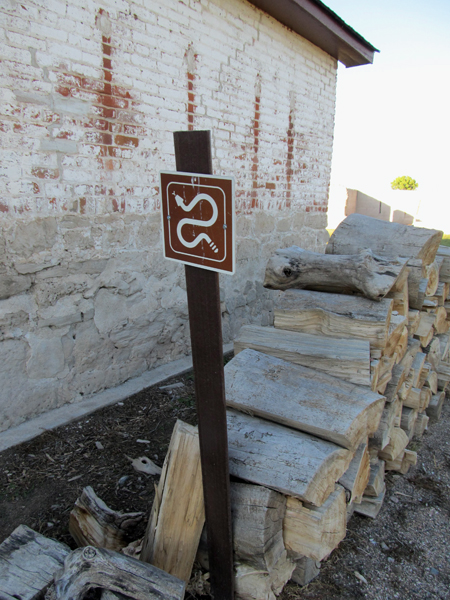The unseasonably warm weather is bringing rattlesnakes out of hiding, resulting in larger numbers of people being bitten this spring and summer. And while snakes are found in both dry and wet environments, did you know that wood piles are one of the most common places for rattlers and other snakes to hide? Recently, a victim in San Bernardino County, California was tidying up a wood pile in his back yard. He reached for a log and felt a sudden burning sensation in his arm. Not two weeks l ater, also in southern California, another man building a firewood pile on his property was bitten by a juvenile rattlesnake, later identified as a Southern Pacific rattlesnake, also known as a Western rattlesnake. This particular type of rattlesnake is native to California and has highly toxic venom. The venom of the Southern Pacific rattlesnake is so toxic that it requires more antivenin than other types of rattlesnakes and packs a potentially lethal punch. Wearing protective gloves and snake gaiters on your lower legs is an easy and inexpensive safety precaution when working in snake habitat.
ater, also in southern California, another man building a firewood pile on his property was bitten by a juvenile rattlesnake, later identified as a Southern Pacific rattlesnake, also known as a Western rattlesnake. This particular type of rattlesnake is native to California and has highly toxic venom. The venom of the Southern Pacific rattlesnake is so toxic that it requires more antivenin than other types of rattlesnakes and packs a potentially lethal punch. Wearing protective gloves and snake gaiters on your lower legs is an easy and inexpensive safety precaution when working in snake habitat.
Why wood piles? Snakes cozy up in many places— rock walls, ledges, under bushes— but many times snakes live where their food supply is plentiful. Mice and rats like to build their nests in wood piles. Get rid of rodents and you will remove a major source of rattlesnake attractant. This is especially important around areas where animal food is stored on farms. The height of activity for snakes is during summer, and especially at night. If you have woodpiles, you want them 12 to 16 inches above the ground. It doesn't give a place for the snakes to hide.
If a rattlesnake feels threatened it will often times release its venom. The venom can clog your blood and shut down your respiratory system. Rattlesnake venom works like acid in the body, killing the living cells it touches. If you get bitten, it is going to hurt, it is going to swell, and you are going to have tissue damage. If not treated quickly, a bite in the arm or leg could cause irreversible damage to that limb. It is important to keep the wound immobilized below the heart so that the venom spreads less quickly. It is critical to receive immediate medical attention.
Besides the damage and pain that can be caused by a bite, you will likely face high medical expenses. A victim of a rattlesnake bite is given between 10 and 15 anti-venom vials. Each of those vials costs between $2,000 and $5,000! Wearing protective snake gaiters or snake boots is an easy and inexpensive safety precaution for not only working around woodpiles, but when hiking or camping in the desert or woods. Be safe and not sorry— wear snake bite protection!